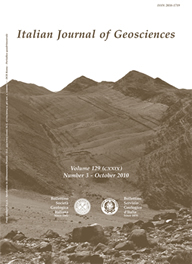
Representation and transfer of geological knowledge in It-supported projects
Gianni Balestro(*) (**), Fabrizio Piana(**), Mauro De Donatis(***) & Lorenzo Bruciatelli(***)
(*) Università di Torino Dipartimento di Scienze della Terra, Via Valperga Caluso, 35 10125
Torino, Tel. +39 011 6705186, Fax +39 011 6705339, gianni.balestro@unito.it
(**) CNR Istituto di Geoscienze e Georisorse, Via Valperga Caluso, 35 10125 Torino.
(***) Università di Urbino Dipartimentodi Scienze Geologiche e Tecnologie Chimiche e Ambientali, Località Crocicchia 61029 Urbino.
Volume: 129 (2010) f.3
Pages: 441-449
Abstract
Information Technologies (IT) have the capability to improve the clearness and the usefulness of scientific information, and related applications in earth sciences could allow to make geological data more sharable among different users. This paper illustrates an approach to represent the knowledge paths followed by field geologists involved in assessment and description of complex structuralgeological settings and processes, through the use of specific IT applications. The proposed approach is based on three working steps: i) building of a conceptual map (cMap) that defines the project approach to the study matter, drives the acquisition of field data and gives rules for GIS representation of interpreted geological features (prefieldwork stage); ii) capturing of data directly in the field by means of digital devices, in a way suitable to retrace the acquisition data steps and to separate the observed features from the interpreted ones (fieldwork stage); iii) management of information in relational GIS databases by means of «geological» metadata that could define the «weight» of data and explain the adopted interpretations (postfieldwork stage). An application of these working steps is given in a case study of the stability evaluation of a quarry rock mass. In the example, different conceptualizations and investigation methods are combined so that they are sharable among field geologists and engineering geologists in order to allow crucial decision in characterization and modelling of the quarry slope. Besides, ITbased approaches should get retraceability of decisional processes possible.
Keywords
Get Full Text